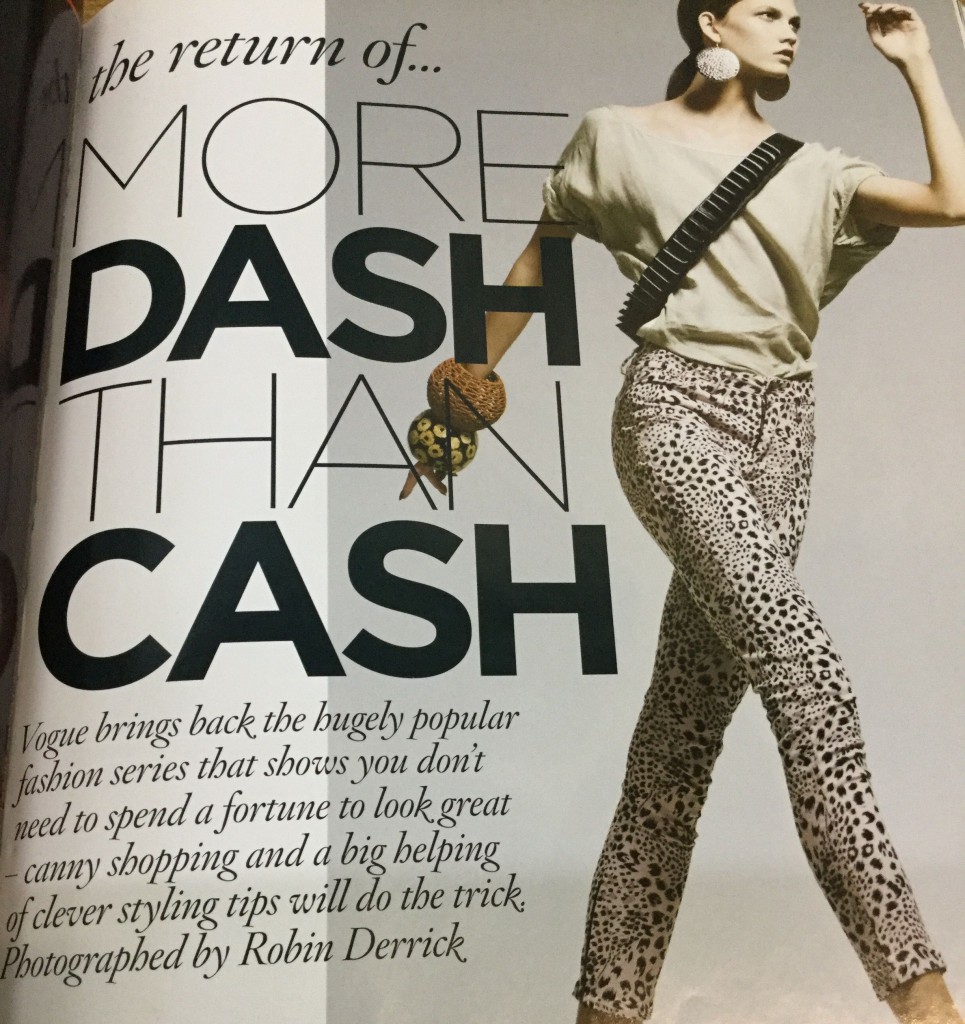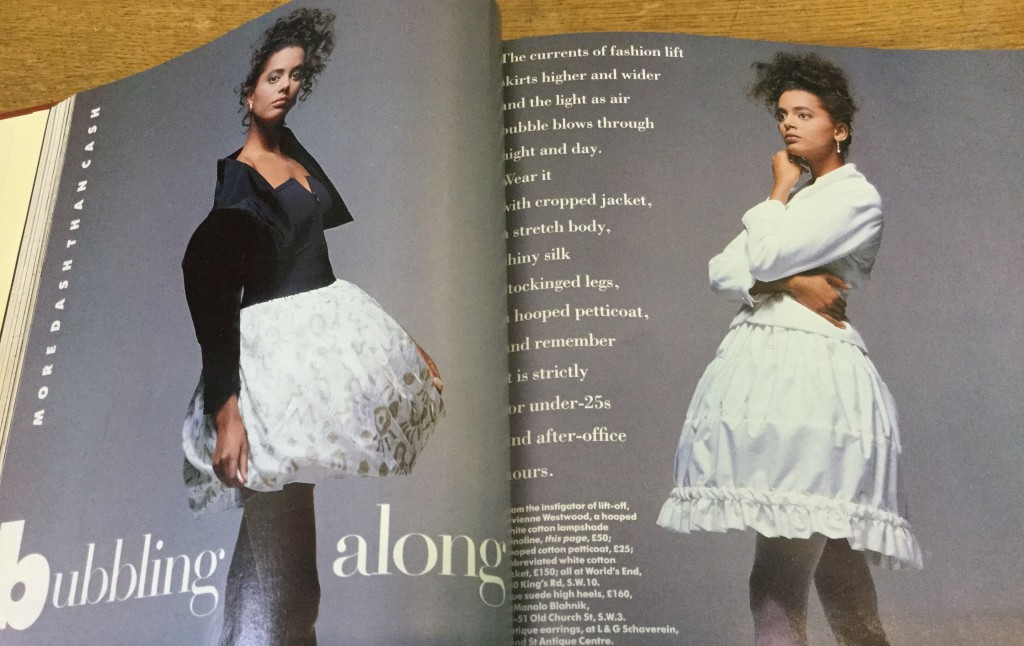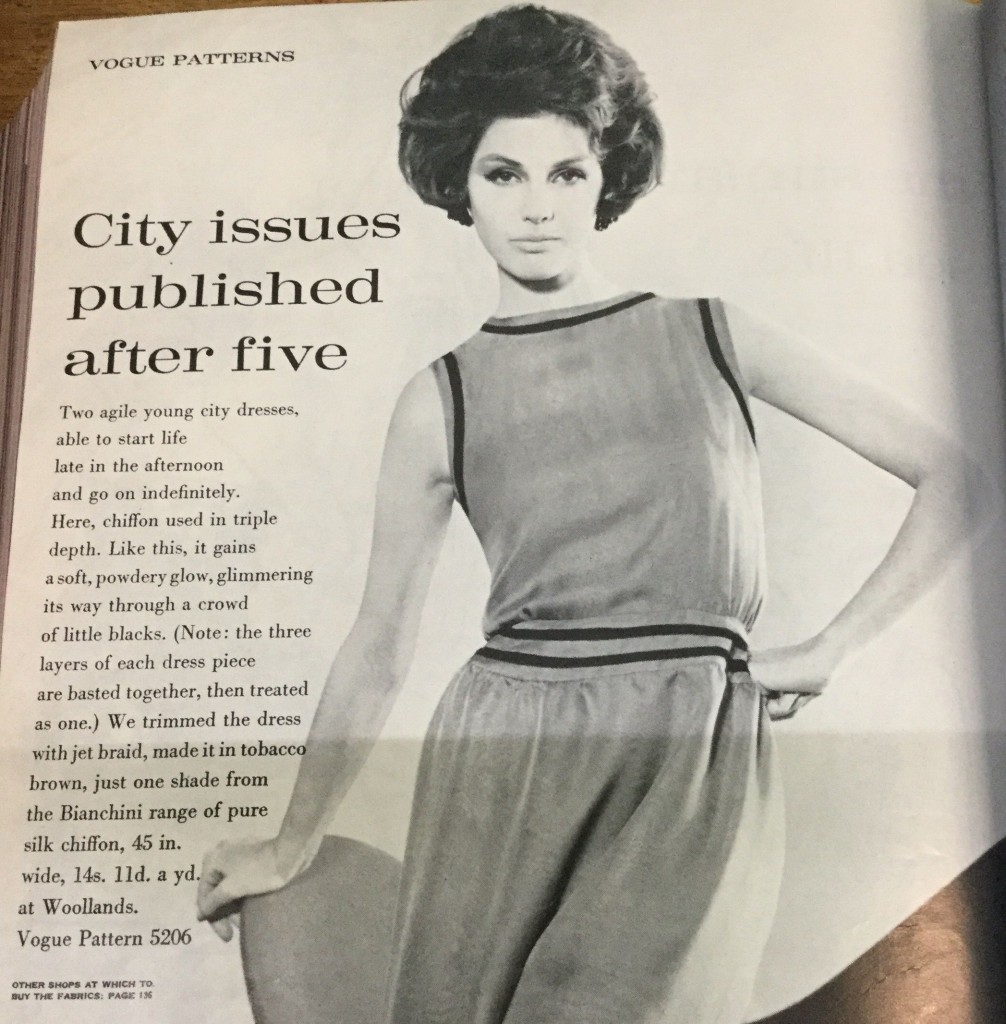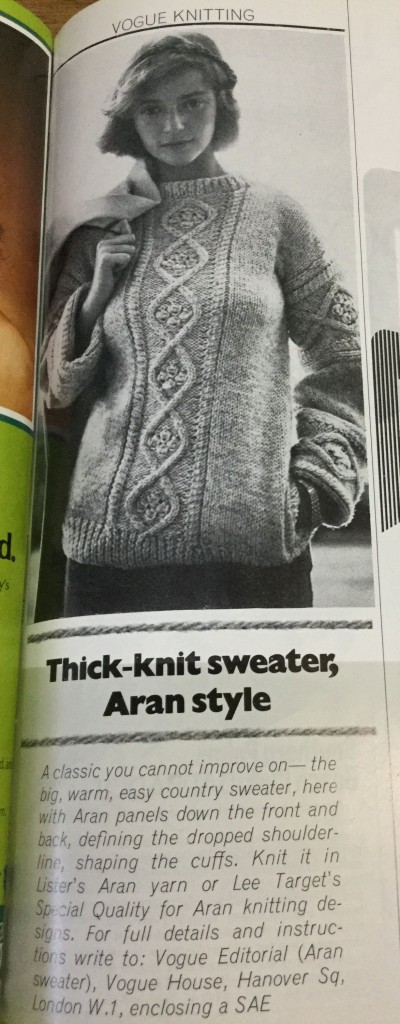VOGUE: Part 2 – fashion on a budget
To celebrate 100 years since British VOGUE was published, we explore different aspects of the magazine from the 1950s to the present day. In this second article we look at how VOGUE catered for readers with a limited budget but who still wanted to wear up-to-the-minute fashion.
Since its first issue in 1916 VOGUE always featured expensive, couture fashion that would have been out of the price range of most of its readers. Not many people would be able to afford the Versace dress, with a price tag of £8,200, that Claudia Schiffer wore on the cover of the April 2009 issue; but VOGUE has always sold dreams and aspirations.
The April 2009 issue also saw the return of a regular feature, last seen in 1987, called More Dash Than Cash – a timely return just after the British economy officially went in to recession for the first time since the 1990s. And it continued to be a regular feature until January 2010.

As its name implies this was a series featuring ‘budget’ clothes, though not budget in the Primark sense, but rather the affordable clothes from retailers such as Top Shop, Jigsaw, French Connection and River Island which sported price tags of one or two zeros rather than three. In previous incarnations this series was first called More Taste Than Money in the early 1950s; it became More Than Your Money’s Worth in the late 1950s, then More Dash Than Money in the 1960s and More Fashion Than Money in the late 1960s, before finally becoming More Dash Than Cash in the mid 1970s.

Vogue has also catered for readers who wanted to make their own clothes and knitwear. The June 1952 issue had a feature called Paris original models in VOGUE patterns.
The patterns were from eight famous couturiers – including Shiaparelli, Lanvin-Castillo and Patou – were of garments that had been shown in the spring collections. VOGUE were allowed to duplicate the patterns and to sell them commercially. The idea being that the garments could then be made up at home or by a dressmaker.

VOGUE also produced their own range of dress and knitting patterns that were promoted in the magazine and could be bought commercially. Dress patterns were produced until the 1990s and knitting patterns were printed in the magazine regularly during the 1950s and early 1960s and were later available for purchase. Confusingly, there is a magazine called Vogue Knitting which is nothing to do with VOGUE.
Sadly, in 2016 there is very little in VOGUE that could be considered budget or affordable aside from the VOGUE Promotion features for high street retailers such as Marks and Spencers.
The Information and Reference Library takes the current issue of VOGUE every month and has a back file from May 1952.

See also VOGUE – Part 1: more than a fashion magazine
[ Fiona Campbell, Library Assistant ]

